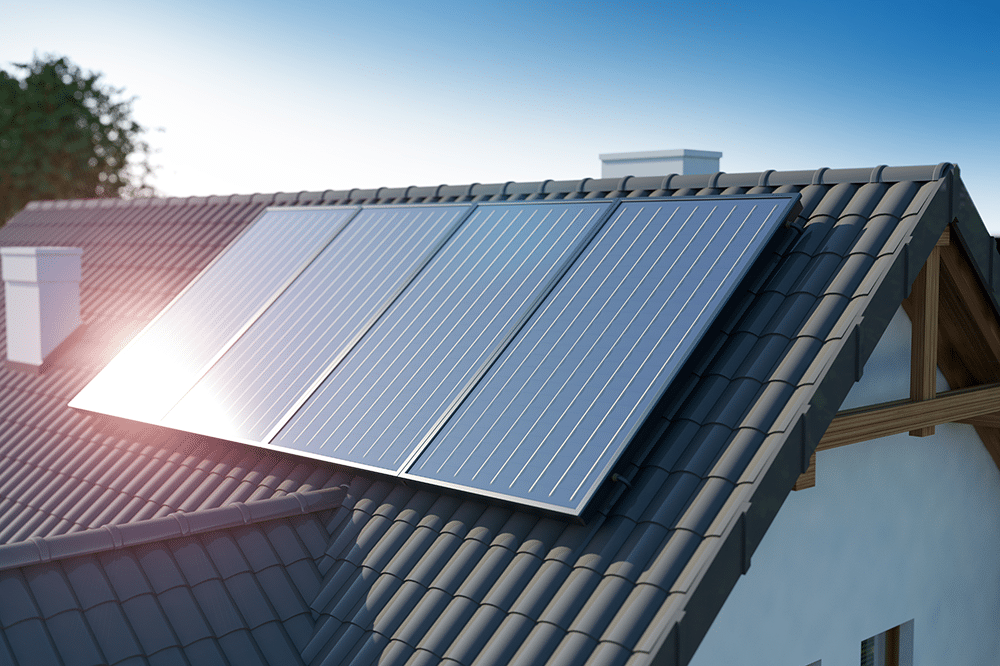
Future homes standard: a summary
From automotive to construction, many different industries and sectors, wheels are in motion to bring in legislation and new standards that will help us push towards the goal of net-zero emissions by 2050.
Currently under review is the Future Homes Standard – updates to Building Regulations for new dwellings which will impose stricter material standards and set emissions targets.
In this post, we’ll give you a summary of the Future Homes Standard and what it will mean for the industry.
The background
New and existing dwellings account for 20% of greenhouse gas emissions in the UK, so bringing in measures to address this is a vital step on the road to net-zero. Although we have managed to cut household emissions by around 38% from where they were in 1990 (as of 2019), more must be done in order to meet the net-zero target in 2050. The drop is largely due to a cleaner energy mix based on gas and renewables instead of coal, and reduced energy use. Without underlying factors, emissions would have been twice as high as 1990.
What is the Future Homes Standard?
Put simply, the Future Homes Standard is a set of proposed updates to Part L (conservation of fuel and power) and Part F (ventilation) of the Building Regulations, last updated in 2013. The government plan to bring in the Future Homes Standard by 2025, citing that homes built under this standard should emit 75-80% less carbon when compared with homes built under current standards. In 2025, it’s thought that gas boilers will be banned in the construction of new homes.
The Future Homes Standard is an off-shoot/development of the Grand Challenges Building Mission – which promotes clean growth in the UK and sets out to halve the energy use of new buildings by 2030.
The government has acknowledged that a lot of widespread change is needed in the sector to prepare for the Future Homes Standard in 2025. They have proposed an uplift to current standards to be bought in – originally pegged for 2020, but as the standard is currently under review, this would be more likely to come into effect in 2021. The interim standard would set out to reduce emissions from new homes by 31%.
Updates to Part L
We’ll mainly focus on the updates to Part L (conservation of fuel and power) in this article, as it’s most relevant to our industry and our customers.
The proposed changes set out two options for an uplift to current regulations around fabric standards: Future Homes Fabric, and Fabric plus technology. The two options have different impacts on both building costs but also potential savings for the householder.
Future Homes Fabric
These proposed changes would result in a 20% reduction in emissions from new dwellings. This performance is based on homes with:
- Very high fabric standards including triple glazing
- Gas boiler
- Wastewater heat recovery system
It’s estimated that the above measures/requirements will add £2557 to the build cost of new homes but save householders up to £59 per year on energy bills.
Fabric plus technology
These proposed changes would result in the higher target of a 31% reduction in emissions from new dwellings. This option moves focus away slightly from higher fabrication standards onto the introduction of more innovative, low-carbon technology.
Performance is based on homes with:
- Very high fabric standards, but triple glazing would not be mandatory
- Gas boiler
- Waste heat recovery system
- Photovoltaic panels (solar panels)
It’s estimated that these changes will result in an additional build-cost of £4847 on new homes but a potential annual saving of £257 per year on energy bills. The reason this option has been titled “fabric plus technology” is it’s expected that in order to bring down the build costs, developers may bring in low-carbon heating and other solutions.
Performance metrics
A key change to Part L for the uplifted standards is how performance is measured against the standard. Currently, the key performance metrics are:
- CO2 emission target
- Fabric energy efficiency target
- Minimum standards for fabric and fixed building services
The update proposes the key performance metrics be changed to:
- Primary energy target
- CO2 emission target
- Householder affordability
- Minimum standards for fabric and fixed building services
The introduction of the primary energy target and the householder affordability metrics make the standards slightly more complex and difficult to interpret. For that reason, the government is proposing removing the current Fabric Energy Efficiency Standards (FEES) as a performance metric and instead focus on improving minimal standards for each individual fabric element (walls, party walls, doors, roofs, windows, etc).
What it means
Higher fabrication standards will potentially mean higher build costs, so many developers will potentially be looking to bring in low-carbon heating and energy storage solutions ahead of the standards being brought in in 2025. Particularly if gas boilers are to be phased out, the industry will rely on renewables and domestic energy storage in developing new homes.
Elmelin are committed to working with our customers to develop solutions for domestic applications that will meet regulations set by the Future Homes Standard and help to achieve the wider goal of net-zero. If you’d like to find out more, get in touch.
